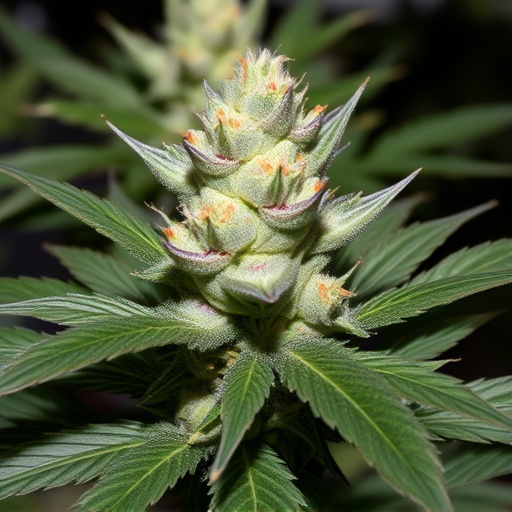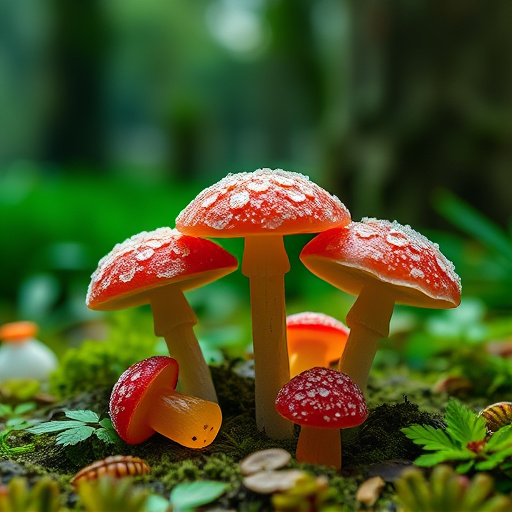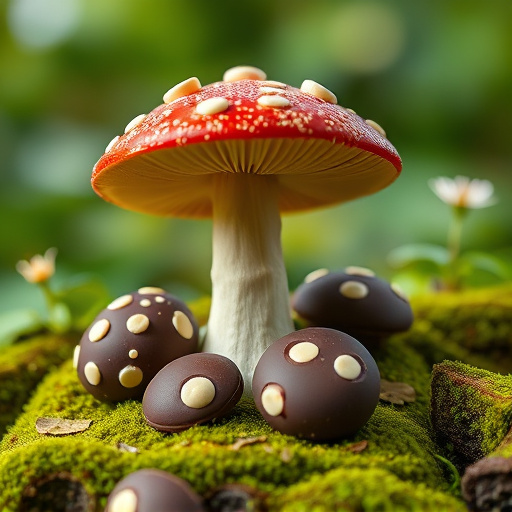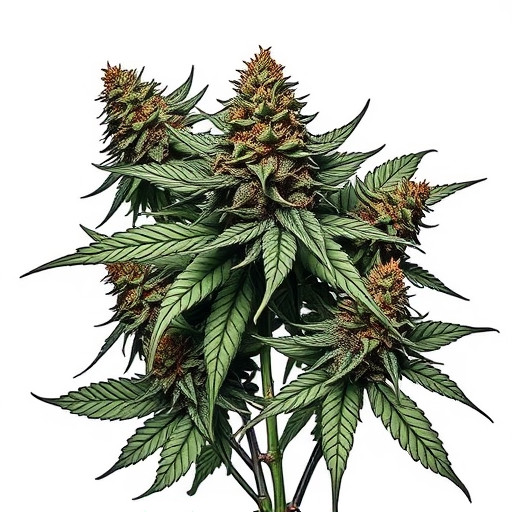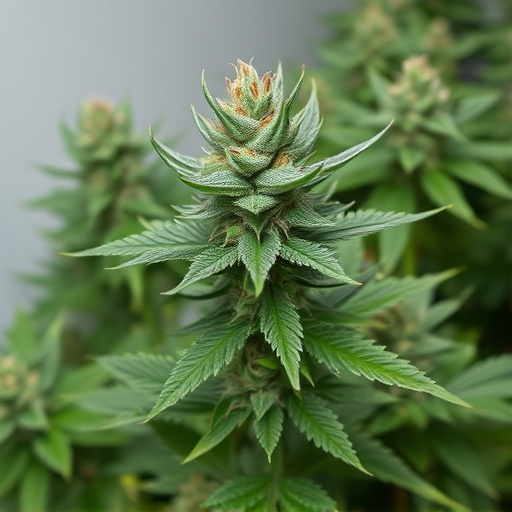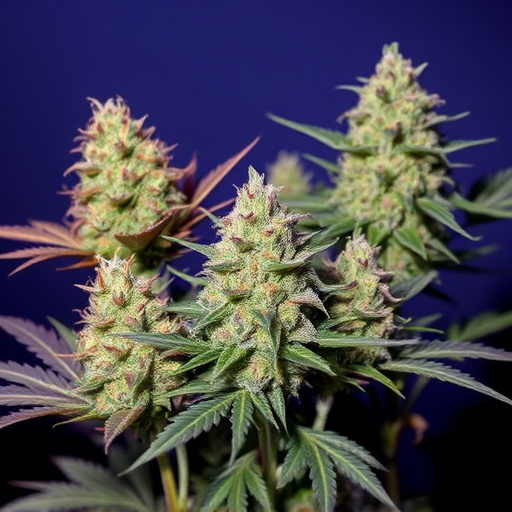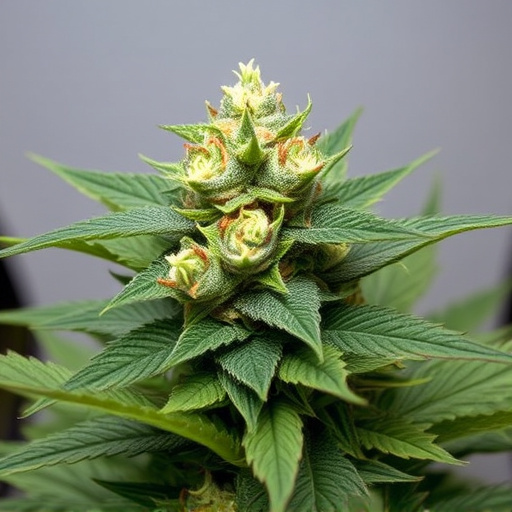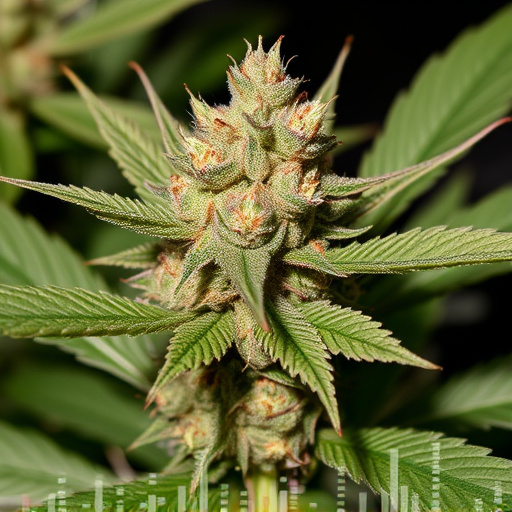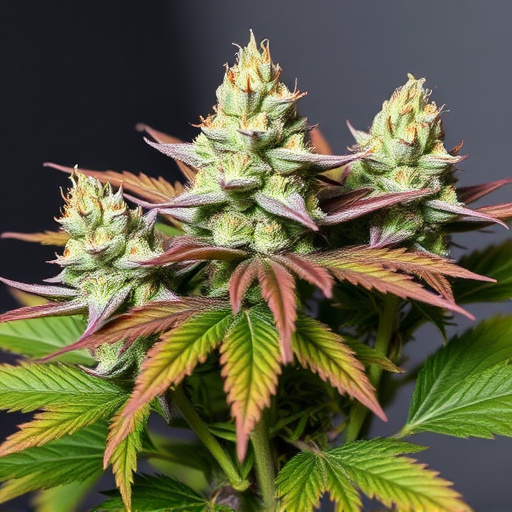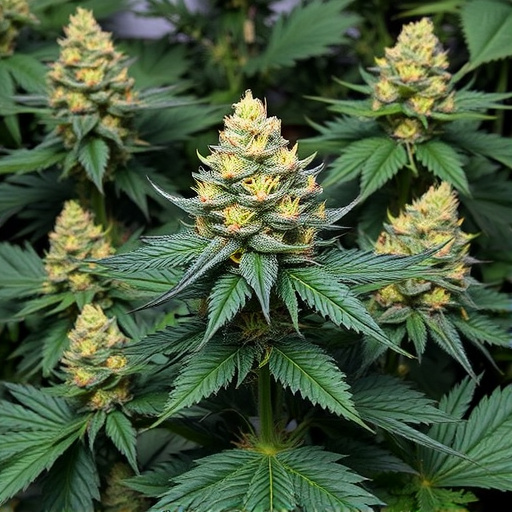Trichomes, microscopic glandular hairs on cannabis flowers, are vital for shaping hybrid weed strains' unique aroma, flavor, and potential therapeutic benefits. They vary in shape, size, and color, producing compounds like terpenes and cannabinoids, with THC responsible for psychoactive effects. Hybrid strains' diverse trichome structures and compositions result from crossed parent plants, leading to varied terpene and cannabinoid profiles that contribute to distinct sensory experiences. Trichome appearance impacts potency and effectiveness, making them attractive to cannabis enthusiasts seeking specific therapeutic benefits or desired effects.
“Unraveling the mysteries of trichomes in cannabis flower is key to understanding this plant’s complex nature. These tiny, hair-like structures play a vital role in shaping the final product’s aroma, flavor, and potency. In this article, we explore what trichomes are and their significance in cannabis development. Furthermore, we delve into how hybrid weed strains influence trichome structure and composition, providing insights for cultivators and enthusiasts alike to appreciate the intricate relationship between genetics and this remarkable plant.”
- What Are Trichomes?
- The Role of Trichomes in Cannabis Flower Development
- How Hybrid Weed Strains Affect Trichome Structure and Composition
What Are Trichomes?
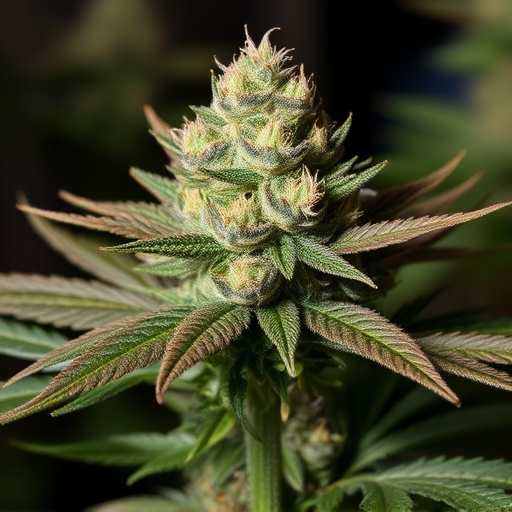
Trichomes, often referred to as tiny hair-like structures, are an essential part of cannabis flowers’ intricate makeup. They are specialized glandular hairs that produce and secrete a wide range of compounds, including terpenes and cannabinoids, which contribute significantly to the plant’s aroma, flavor, and potential therapeutic effects. In hybrid weed strains, trichomes play a pivotal role in defining the final product’s characteristics.
These microscopic glands vary in shape and size across different cannabis varieties. They can be found covering the surface of flowers, leaves, and even stems. Trichomes secrete resins that contain valuable chemical compounds. As they mature, trichomes change color, often turning milky or amber, indicating their high cannabinoid content, particularly THC (tetrahydrocannabinol), which is responsible for cannabis’s psychoactive effects.
The Role of Trichomes in Cannabis Flower Development
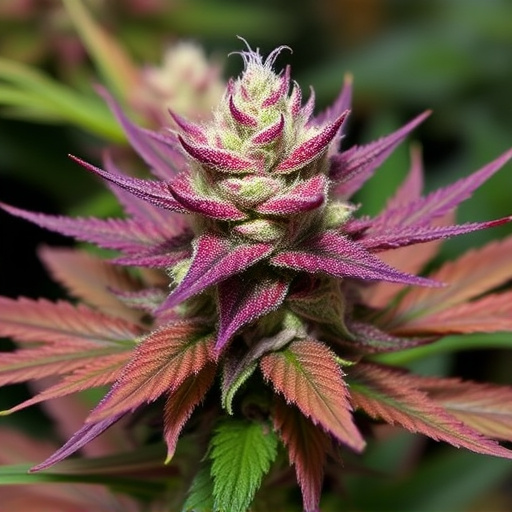
Trichomes play a pivotal role in the development and unique characteristics of cannabis flowers, or buds. These tiny, glandular hairs cover the surface of the bud and are responsible for producing and protecting a variety of compounds that contribute to the plant’s diverse effects and aromas. In hybrid weed strains, trichome development is particularly intriguing as it can vary significantly between different genetic lineages.
During flowering, trichomes secrete resins and terpenes, which not only give the buds their distinct scents but also provide protection against pests and environmental stressors. The composition and density of these trichomes directly impact the potency, flavor, and overall quality of the cannabis flower. As such, understanding trichome structure and function is essential for cultivators aiming to optimize their hybrid weed strains and create desirable, high-quality products.
How Hybrid Weed Strains Affect Trichome Structure and Composition

Hybrid weed strains offer a unique blend of characteristics from two or more parent plants, and this diversity extends to their trichome structure and composition. When cannabis plants are crossed, the resulting hybrid may exhibit varying trichome types and densities across different parts of the flower. This heterogeneity can lead to interesting sensory experiences for users, as different terpenes and cannabinoids may be expressed in each hybrid strain.
The complex genetic makeup of hybrid strains influences not only their aroma, flavor, and potential therapeutic effects but also the visual appearance of trichomes. Some hybrids may produce dense, amorphous trichome clusters, while others feature sparse, elongated trichomes. These structural variations can impact the overall potency and effectiveness of each strain, making them appealing to various cannabis enthusiasts seeking specific experiences or medicinal benefits.
Trichomes play a vital role in shaping the unique characteristics of cannabis flowers, including those produced by hybrid weed strains. By understanding their structure, composition, and influence on plant development, cultivators can optimize growing conditions to enhance the desired traits in their hybrid varieties. This knowledge not only contributes to the art of cannabis cultivation but also ensures that consumers gain access to a diverse range of high-quality products with tailored effects.
